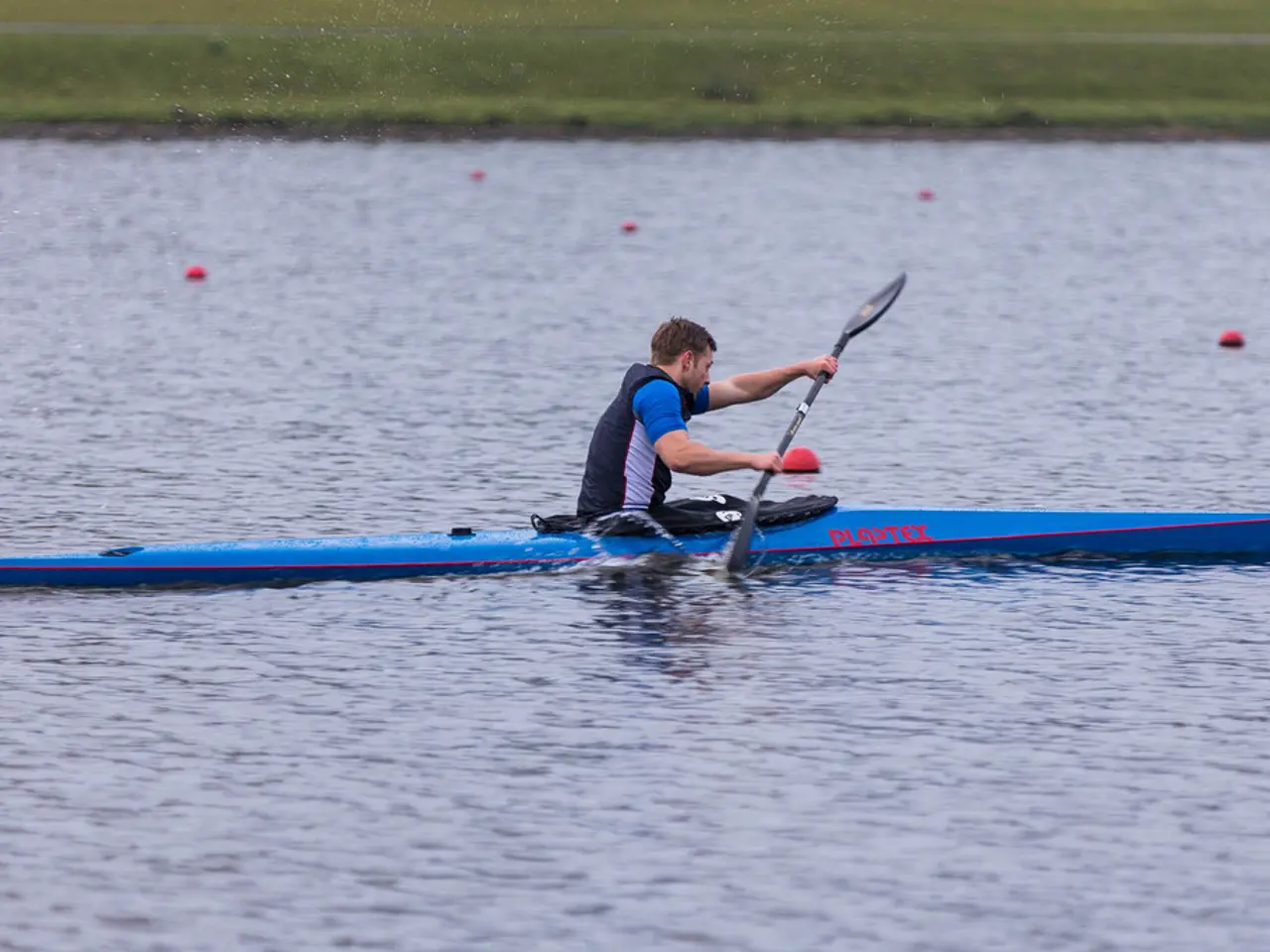Exploring Long Distance Kayaks: Picking the Ideal Vessel for Long Paddling Trips and Deep-Sea Ventures
When embarking on kayaking trips, it's essential to make an informed decision about the kayak you choose. Here are some key factors to consider to ensure you select a touring kayak that balances performance, comfort, and safety for your specific needs.
Weight Capacity
Calculate your total weight, including gear, and choose a kayak with a maximum weight capacity that exceeds this. Ideally, keep your total weight around 70% of the kayak's capacity for better performance and stability.
Kayak Length and Width
Touring kayaks tend to be long and narrow to reduce water resistance and travel efficiently over long distances. However, this makes them less maneuverable. Longer kayaks offer higher speeds, while narrower profiles increase tracking but reduce stability.
Stability
Stability, both initial (steady on calm water) and secondary (steady when tilted), is crucial for safety and self-rescue situations. Wider kayaks typically offer better initial stability, while narrower ones require more skill.
Storage Space
Essential for longer trips, touring kayaks generally have more and better storage compartments for gear. This allows you to carry essentials safely while touring.
Cockpit Size and Design
Comfort during long paddling sessions is critical. The cockpit should fit well – snug enough to secure spray skirts for safety but roomy enough for comfort and easier self-rescue maneuvers.
Ease of Transport and Durability
Kayak weight affects transportation ease. Durable materials like rotomolded plastic resist impacts and abrasion well, important if you'll be handling or portaging your kayak frequently.
Intended Use and Water Type
Touring kayaks are designed for open water (lakes, seas, large rivers) where long-distance and directional tracking are prioritized over sharp maneuvering. Choose a kayak suited to your typical paddling environment and style.
Additional Considerations
- Always check the weather forecast before heading out on kayaking trips, as conditions can change quickly on the water.
- Personal Flotation Devices (PFD) should always be worn while kayaking, and should fit snugly and comfortably during extended wear.
- A whistle is essential for signaling for help and alerting other boaters to your presence.
- A first aid kit is necessary for emergencies during kayaking trips.
- A bilge pump is vital for managing water that may enter a kayak, especially during sudden weather changes.
Kayak Accessories
- Kayak charts can guide you through waterways, outlining currents, tides, and potential hazards, and are an invaluable navigation tool during trips.
- Rudders and skegs improve tracking and handling, making a kayak more manageable in windy conditions and reducing paddling effort by approximately 15%.
- Many models feature adjustable seats and back supports for comfort during long hours of paddling.
- Dry bags are important for keeping gear and clothing dry during kayaking trips, and are available in various sizes.
- A lightweight paddle can significantly reduce fatigue during longer kayaking trips.
Budgeting
Set a budget for your kayak and additional gear costs such as paddles, life jackets, and safety equipment.
Paddle Types
Straight paddles are common in touring kayaks and vary in blade shape and size, impacting performance. Bent shaft paddles help reduce wrist strain and improve paddling efficiency.
By considering these factors collectively, you can select a touring kayak that suits your needs, ensuring a safe and enjoyable kayaking experience. Happy paddling!
[1] Source
[2] Source
[3] Source
[4] Source
[5] Source
Kayaking, being a sport, requires careful consideration of various factors for an optimal and safe experience. Touring kayaks, designed for long-distance travel, also come with specific considerations regarding weight capacity, kayak length and width, stability, storage space, cockpit size and design, ease of transport and durability, intended use and water type, and additional safety accessories such as kayak charts, rudders, skegs, dry bags, and paddles (straight or bent shaft). Proper budgeting is crucial in choosing the right kayak and additional gear.





